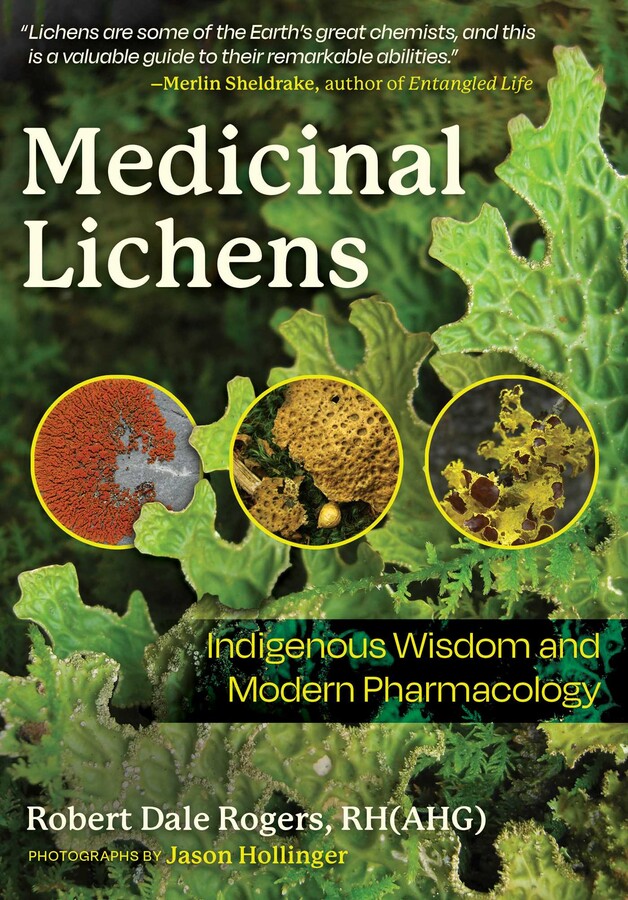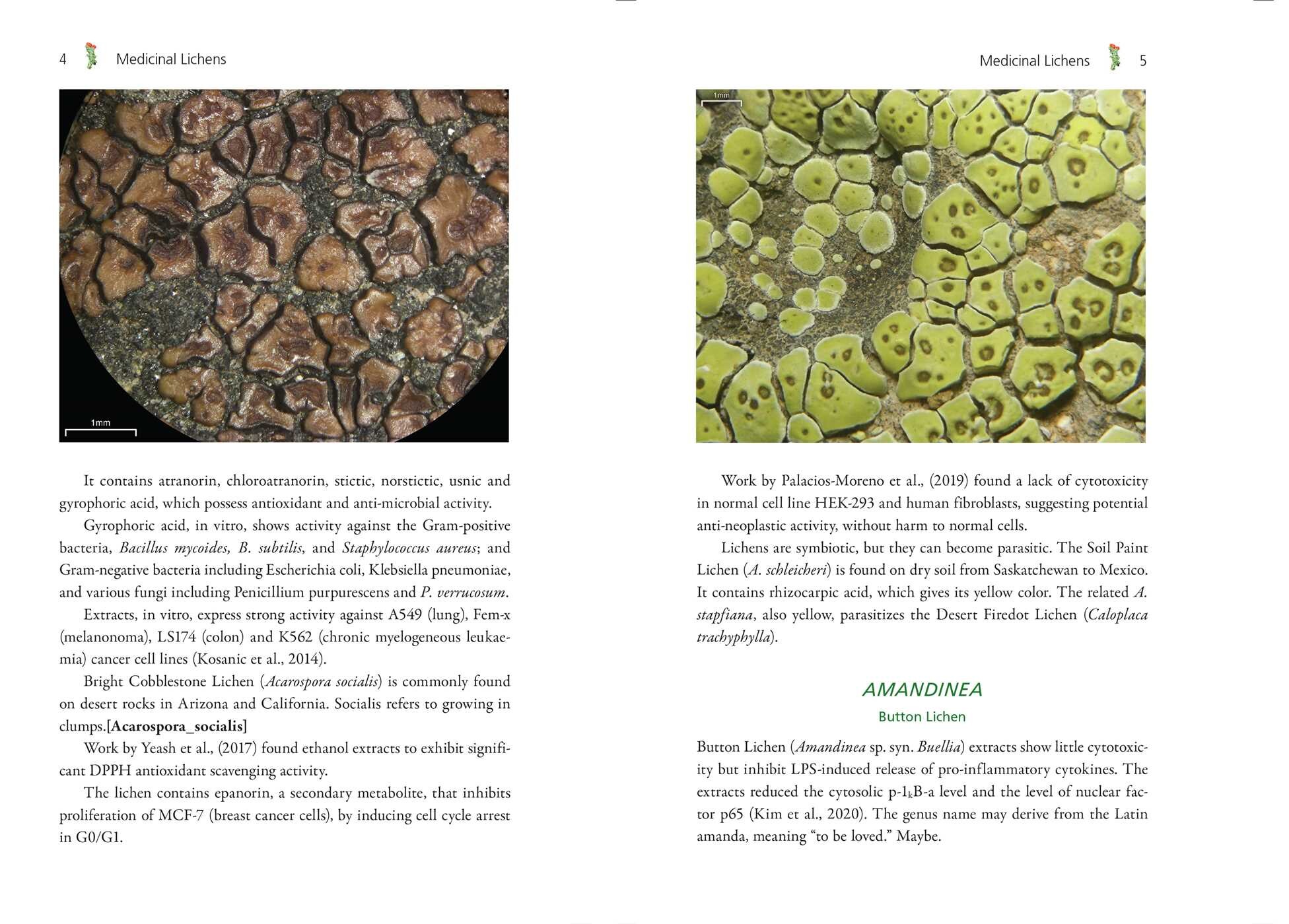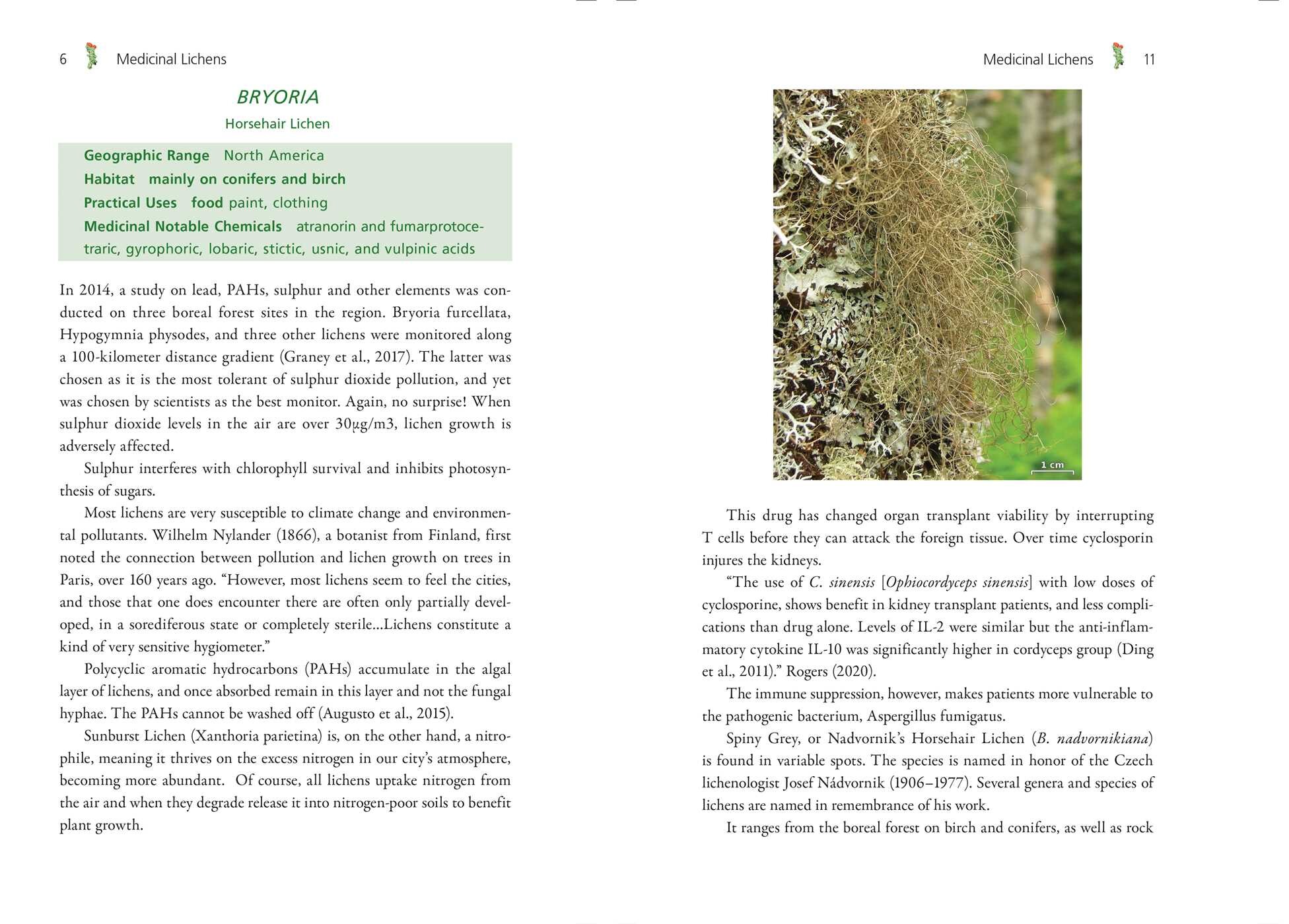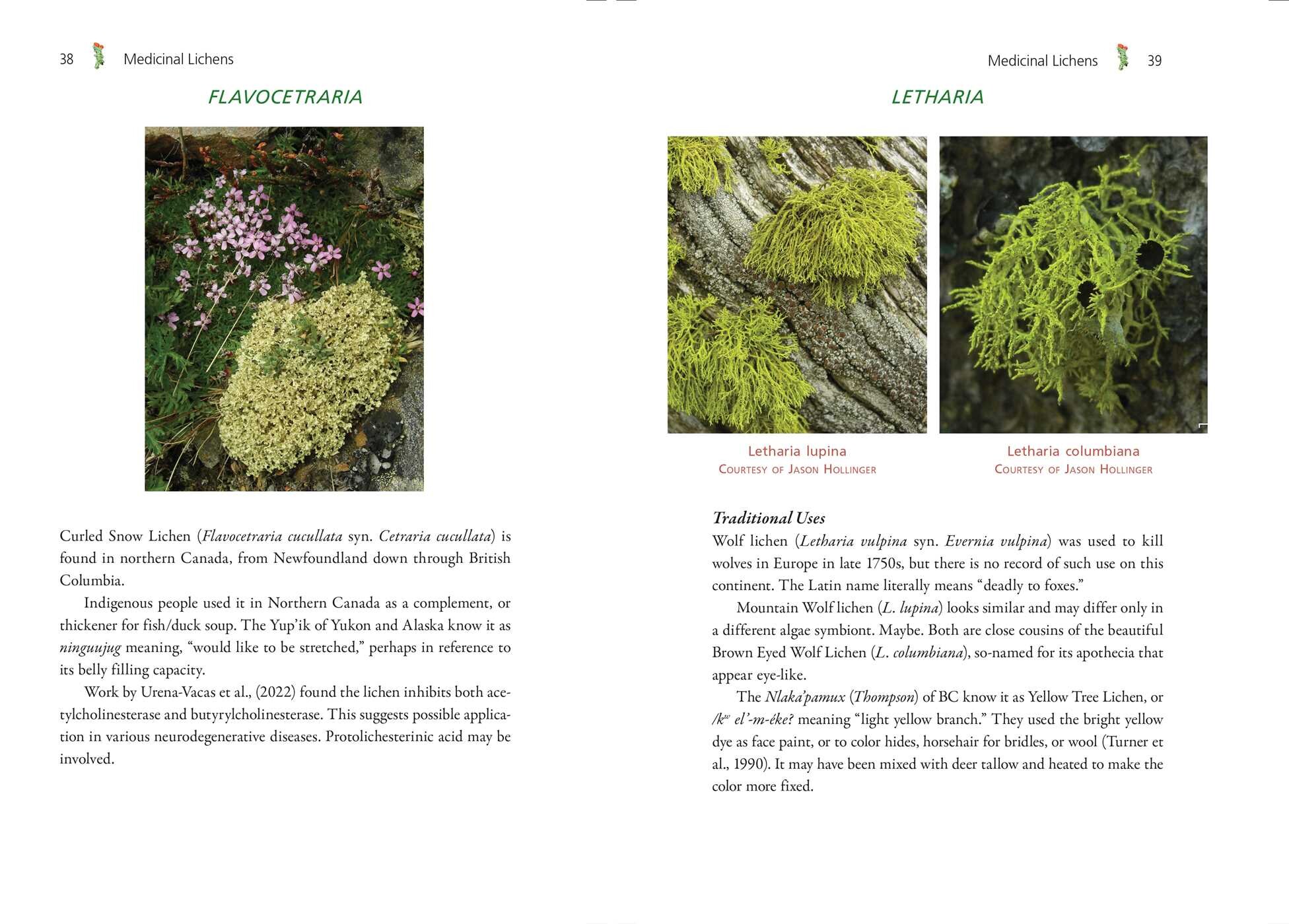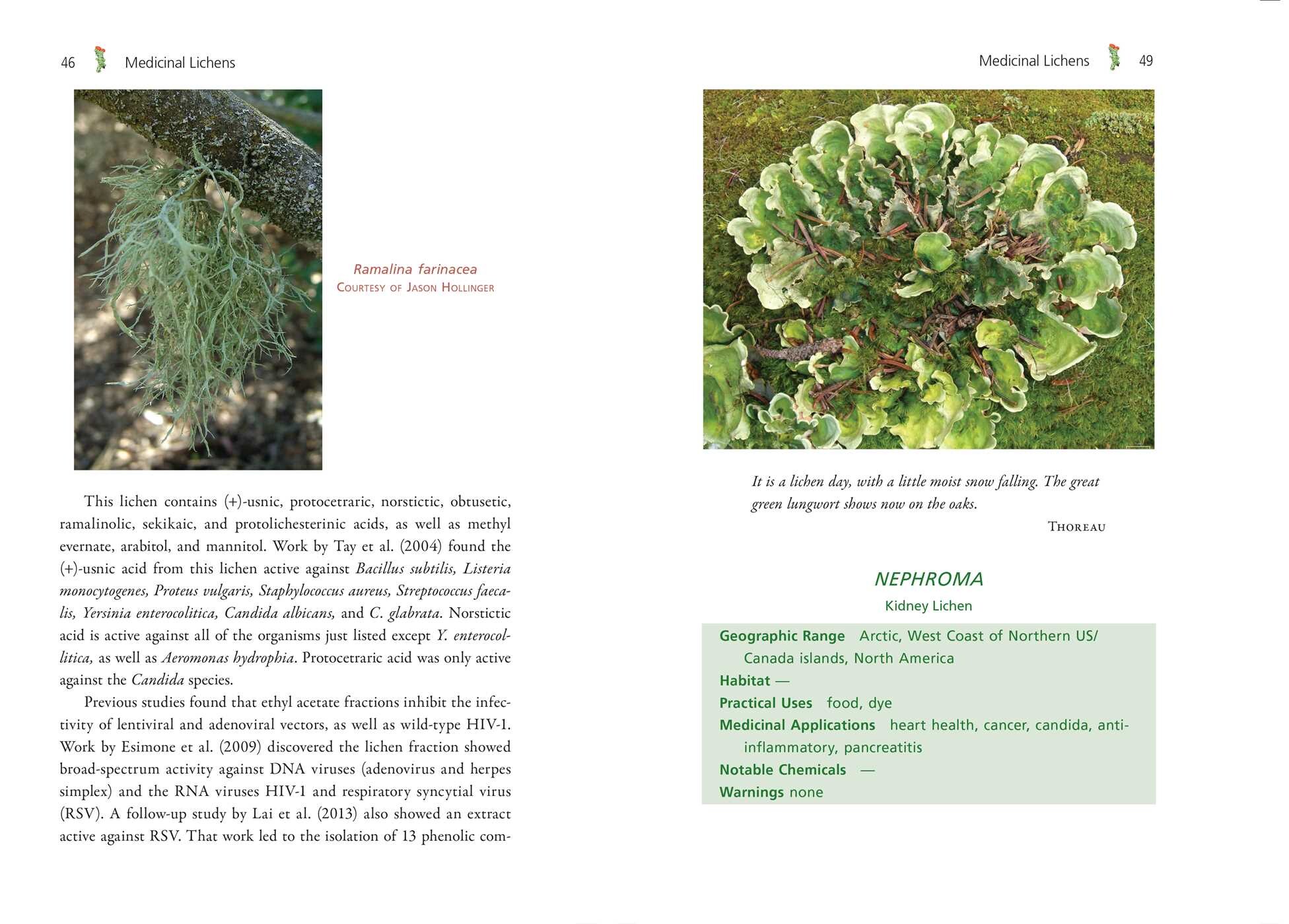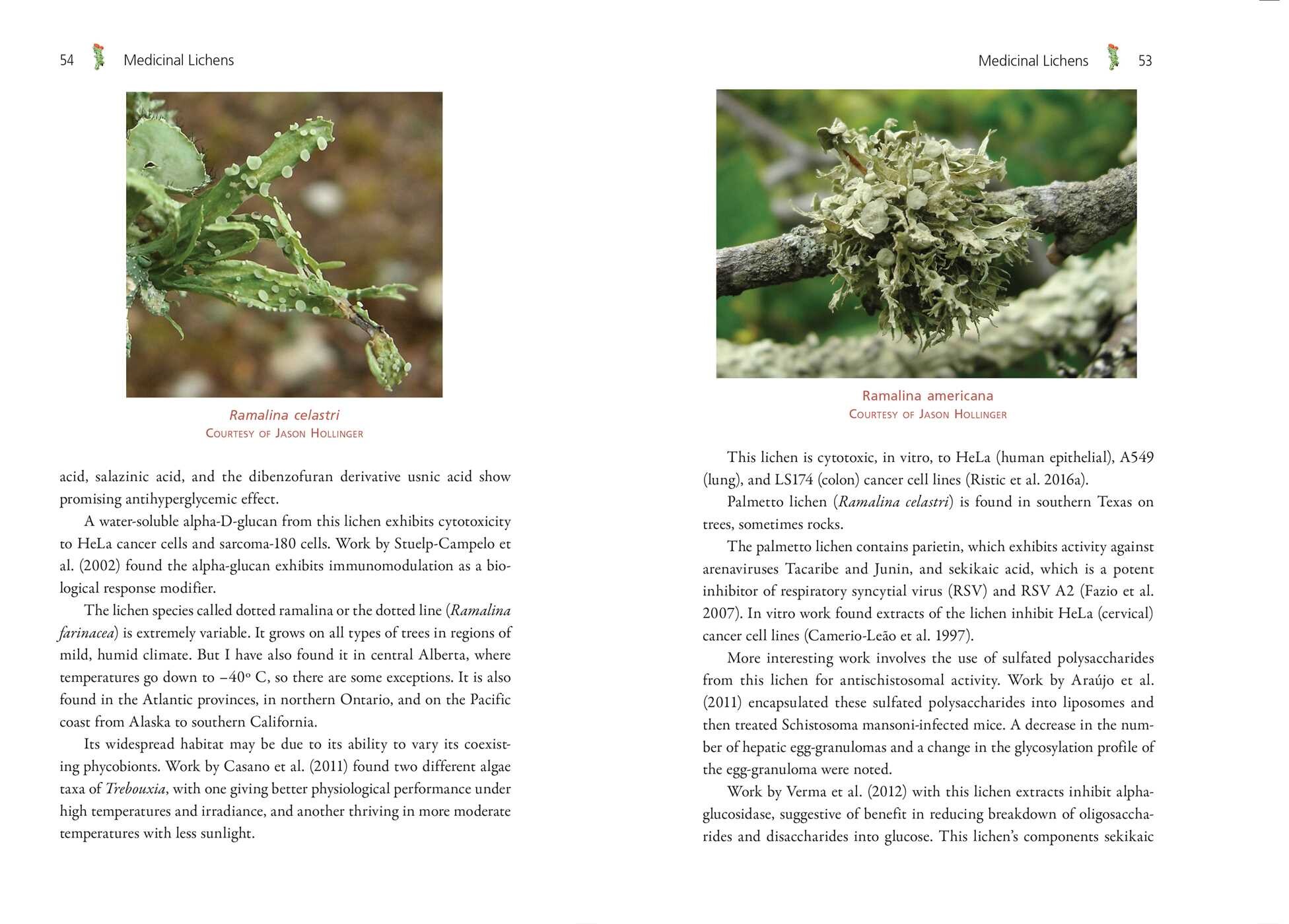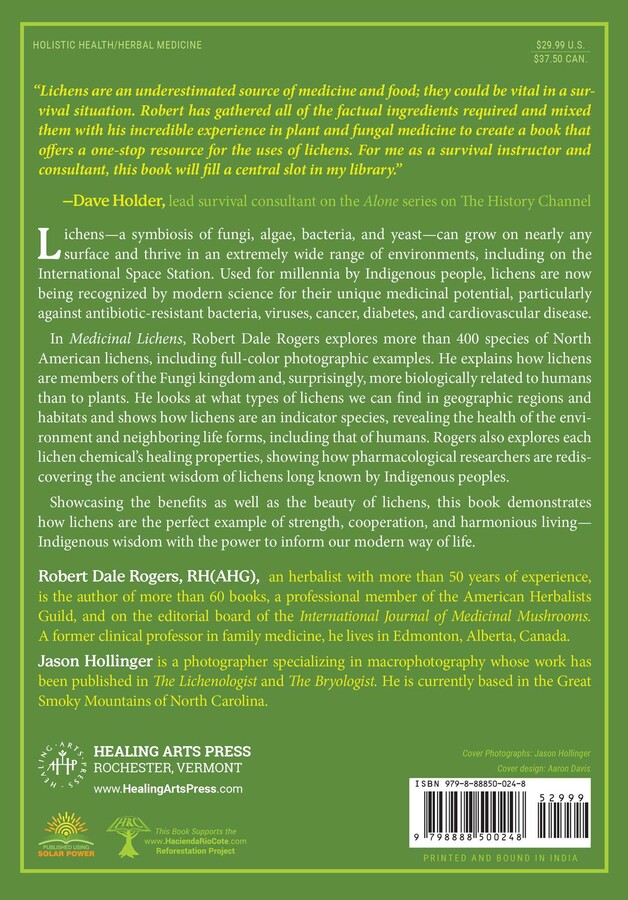Get our latest book recommendations, author news, competitions, offers, and other information right to your inbox.
Table of Contents
About The Book
• Explores more than 400 species of lichens, alongside full-color photos
• Shows the ways that indigenous peoples of North America have traditionally used lichens for food, clothing, dye, paint, and medicine
• Explains in detail the scientific research behind the potency of lichen chemicals to heal many human conditions
Lichens—a symbiosis of fungi, algae, bacteria, and yeast—can grow on nearly any surface and thrive in an extremely wide range of environments, including on the International Space Station. Used for millennia by Indigenous people, lichens are now being recognized by modern science for their unique medicinal potential, particularly against antibiotic-resistant bacteria, viruses, cancer, diabetes, and cardiovascular disease.
In Medicinal Lichens, Robert Dale Rogers explores more than 400 species of North American lichens, including full-color photographic examples. He explains how lichens are members of the Fungi kingdom and, surprisingly, more biologically related to humans than to plants. He looks at what types of lichens we can find in geographic regions and habitats and shows how lichens are an indicator species, revealing the health of the environment and neighboring life forms, including that of humans. Rogers also explores each lichen chemical’s healing properties, showing how pharmacological researchers are rediscovering the ancient wisdom of lichens long known by Indigenous peoples.
Showcasing the benefits as well as the beauty of lichens, this book demonstrates how lichens are the perfect example of strength, cooperation, and harmonious living—Indigenous wisdom with the power to inform our modern way of life.
Excerpt
Medicinal Lichens of North America
There is a low mist in the woods—
It is a good day to study lichens.
Henry David Thoreau
Well, any day is a good day to observe the lichens in your neighborhood. Rural or urban, desert or polar, on trees or rocks, on gravestones and monuments, they are everywhere! They favor gravestones, rock walls, cement sidewalks, telephone poles, traffic signs, rusty automobiles, windows, plastic, rubber, leather, and fence posts.
Lichens, along with mushrooms, molds, and yeasts, are members of the kingdom Fungi. Biologically, they are more closely related to humans than to plants. They are so unique they should be given their own kingdom or queendom—identifying them in terms of gender is also taxonomically challenging.
They are often neglected or ignored and have become to many humans an overlooked natural background in city and country. Lichens adapt to difficult ecologies, earning the term extremophiles.
Vincent Zonca (2023) offers his take on their role in our world:
Faceless, mineral and inert in appearance, lichen poses a moral and political problem: it inspires no spontaneous empathy. Like other “lower” beings, it has a hard time accommodating anthropomorphism . . . Must lichen be condemned to the scholarship of specialists or to our idealization of the Marginal and compassion for antiheroes?
The neglect of lichens is symptomatic of human estrangement from nature. In the mid 1970s I read E. F. Schumacher’s book (1973) Small Is Beautiful. It impacted me deeply on a personal level: how one’s individual actions can make a difference. During the same time period I was living in a hippy commune, and began to understand the benefits of cooperation, and symbiotic, mutualistic interactions and energetics.
Our community created a private school, and my godson was an early student. Our walks together in the boreal forest must have rubbed off, as he later completed his Ph.D. in lichenology from Duke University.
But in the past fifty years, the unbridled pursuits of capitalism, optimizing gross domestic product growth, burning of fossil fuels, destruction of old growth forests, and destructive globalization have led to the extinction of numerous species. At present, Earthlings collectively consume the equivalent of 2.8 hectares of land per person, meaning we use the equivalent of 1.8 Earths to meet our present demand. Clearly, this practice is not sustainable.
Sandra Lawrence (2022) notes, “The canaries in this particular coal mine are quietly slipping into unconsciousness and not enough of us seem to be noticing.”
Lichens are a metaphor for becoming more grounded, humble, and attuned to an awareness of the pressing need for a new ecology, and political change, by working on a local grounded level. This represents ancient wisdom, as well as a radical reactionary response. Lichens remind us of the need for positive environmental protection, and to learn lessons from history, not change them.
Lichens are both fragile and resistant. They have the capacity to adapt to changing environments yet are like the proverbial canary in the coal mine, foretelling impending danger. They grow slowly and are symbiotic, the exact opposite of Western society. “They invite us to leave the beaten paths, to cultivate slowness and patience to counter a consumerist ideal based on desires and the acceleration of time, to adopt a model of minimal growth to counter the hubris of exponential growth at any price” (Zonca 2023).
A collaboration between algae, cyanobacteria, bacteria, and fungi gives lichens the ability to survive and thrive in extreme conditions of temperature and lack of moisture.
Some lichens thrive around hot springs at temperatures above 200oC (392oF), while others thrive in cold extremes of minus 60oC (–76oF). The orange-colored elegant sunburst (Xanthoria elegans) lichen grows on rocks at 7,000 meters and survived eighteen months on the walls of the International Space Station. Lichens have been found as soon as four years after flowing lava has cooled.
They can go dormant during periods of drought and revive when moisture is available, swelling up and turning green as they absorb thirty times their weight in water! This process was named reviviscence by Claude Bernard in the mid-nineteenth century, and later anabiosis.
Today, the term poikilohydric is used, meaning the water regulation and content depend upon the lichen’s environment. In hot, dry climates, lichens absorb small amounts of moisture from the atmosphere, as too high a content of water might simmer their tissue or interfere with carbon dioxide and nitrogen exchange.
The life span of lichens is difficult to determine. In the arctic and Antarctica, lichen growth may measure in the millimeters, while tropical lichens can grow several centimeters annually. It appears the slowest growers live longer, and some species, such as temperate-zone Parmelia, live only a decade or two. Semidormant lichens have been found in the arctic from 3,700 to 9,000 years old, while endoliths in Antarctic glacial ice may be up to 100,000 years old (Margesin et al., eds. 2008).
Some withered deciduous ones are left to rustle, and our cold immortal evergreens. Some lichenous thoughts still adhere to us.
Henry David Thoreau
The term lichen may derive from the ancient Greek word leikhën, meaning “to lick.” Leprosy, “what eats around itself,” refers to this skin-related ailment’s peeling appearance. The Latin lîchen may have derived from an ancient Greek word, and means “ringworm,” a fungal skin infection.
This version of lichen was described more specifically by Hippocrates ( 460–371 BCE). Aulus Cornelius Celsus, a Roman physician, also used the term for “the papulae of an eroding, blistering eruption.” Pliny the Elder described lichen as “synonymous with the impetigo of the Latins.” Galen (129–217 BCE) described lichen as “a roughness of the skin, attended with much itching” (Zaghi and Griffin 2016).
Leikhën is also the root of word likanos, meaning “the finger one licks,” or the index finger. In turn, this name was given to a string on a lyre specifically played by the index finger.
The genus Lepraria and the term leprosy derive from the Greek lepein, “to peel.” The autoimmune skin diseases lichen planus and lichen sclerosus stem from this root word. Even the Latin word lepra was denigrated by early Christian writers who used it to mean sin or heresy. No surprise there. On the other hand, it is related to the word “liken,” which suggests comradeship, connectedness, contact, and affection.
But exactly how would one define the relationship between algae, cyanobacteria, and fungi?
Over time, various theories and metaphors have been proposed. Trevor Goward, a lichenologist at the University of British Columbia, suggests, tongue in cheek, that lichens are fungi that discovered agriculture. Other authors suggest lichen fungi are parasites that may become benevolent, or that lichen algae are solar panels for fungi—or the reverse, that fungi are greenhouses for algae growth.
One advantage of cyanobacteria is that it can fix atmospheric nitrogen into a useable form for plants and animals, leading to producing sugars. The fungi provide structure and protection.
Cyanobacteria, like humans, have a circadian rhythm. That is, they have a need for sleep, rest, and a restorative aspect. In humans, the recent discovery of the glymphatic tissue in the brain, with its ability to remove toxins from the brain during sleep, explains in part the ever-increasing levels of reduced mental health and increased levels of chronic neurological diseases. In terms of such rhythms, polar lichens possess internal clocks that help shift their adjustment to seasonal levels of sunlight.
Early authors depicted the fungus in the lichen as a sort of slave driver, or parasitic, describing the condition as helotism. Cooke (1893) wrote about the fungus, “It surrounds them as a spider its prey, with a fibrous net of narrow meshes, which is gradually converted into an impenetrable covering; but whilst the spider sucks its prey and leaves it dead, the fungus incites the algae found in its net to more rapid activity, nay, to more vigorous increase.”
Lichens have a unique capacity to live where no other organisms can survive. The algae provide carbohydrates through photosynthesis, and the fungi in turn provide water, minerals and a complex thallus (a plant part that does not differentiate stems and leaves, lacks true roots, and lacks a vascular system) that prevents algae from drying out. Lichens with algae cannot absorb nitrogen and depend upon their rock or tree to make amino acids. How the algal, bacterial, and fungal elements communicate remains a mystery.
Lichens are fascinating in that they create soil, by the breakdown of rocks, and provide plants with a means of growth. Lichens produce acid that breaks down stone, creating depressions to anchor themselves. When these fine crystals combine with decayed lichens, the first nitrogen-rich soil is formed.
Lichens are long-lived. The round-patched, light-green map lichens are up to five thousand years old. Yellow map lichen (Rhizocarpon geographicum) is estimated to live up to 8,600 years.
Product Details
- Publisher: Healing Arts Press (April 10, 2025)
- Length: 384 pages
- ISBN13: 9798888500248
Browse Related Books
Raves and Reviews
“Lichens are an underestimated source of medicine and food; they could be vital in a survival situation. Robert has gathered all of the factual ingredients required and mixed them with his incredible experience in plant and fungal medicine to create a book that offers a one-stop resource for the uses of lichens. For me as a survival instructor and consultant, this book will fill a central slot in my library.”
– Dave Holder, lead survival consultant on the Alone series on The History Channel
“Robert Rogers’s Medicinal Lichens is a necessary addition not only to the libraries of herbalists but mycophiles as well!”
– Eugenia Bone, author of Mycophilia and Have a Good Trip
“When launching my documentary films like Wild Harvest, I prioritize consulting the world’s leading experts, which is why I work with Robert. There is no one on this planet more qualified than Robert Rogers to continue to enlighten us all with his exhaustive yet engaging research into lichens and ethnolichenology. This book is a gift!”
– Survivorman Les Stroud, survival expert, filmmaker, and author of Beyond Survivorman
“The history of terrestrial life on Earth originates in symbioses, and one of the most astonishing basal relationships is that of what makes a lichen. In this extraordinary book, we find a portal into the taxonomy, ethnolichenology, pharmacopoeia, poetry, and chemistry of these essential organisms that have shaped life as we know it. A must-read!”
– Giuliana Furci, foundress and CEO of the Fungi Foundation
“Whether as food, medicine, or woodland curiosities, lichens demand our attention. Robert sheds necessary light on this mysterious group of composite organisms with detailed notes on edibility, therapeutic properties, Indigenous uses, and more for hundreds of North American species. Essential for the lichen enthusiast.”
– Langdon Cook, author of The Mushroom Hunters
“Lichens are my deep passion, and there are no books out there that can detail this type of medicine for me in the way that this one does. As an Indigenous person who grew up with my kohkum (grandmother) who was so versed in plant medicine, I always appreciate any time I get to spend with Robert and his fascinating knowledge. With a deeper connection to the plant world, Robert understands the medicines in the way my grandmother did, and the teachings in this book are invaluable!”
– Brenda Holder, Cree knowledge keeper
Resources and Downloads
High Resolution Images
- Book Cover Image (jpg): Medicinal Lichens Trade Paperback 9798888500248

